That is my greatest balsamic French dressing recipe and a staple in my kitchen! Candy and tart, the French dressing is great for a lot of forms of salads and for drizzling onto roasted greens, sandwiches, or grain bowls. Garlic, Dijon mustard, and balsamic vinegar add a great deal of taste to this straightforward selfmade dressing.
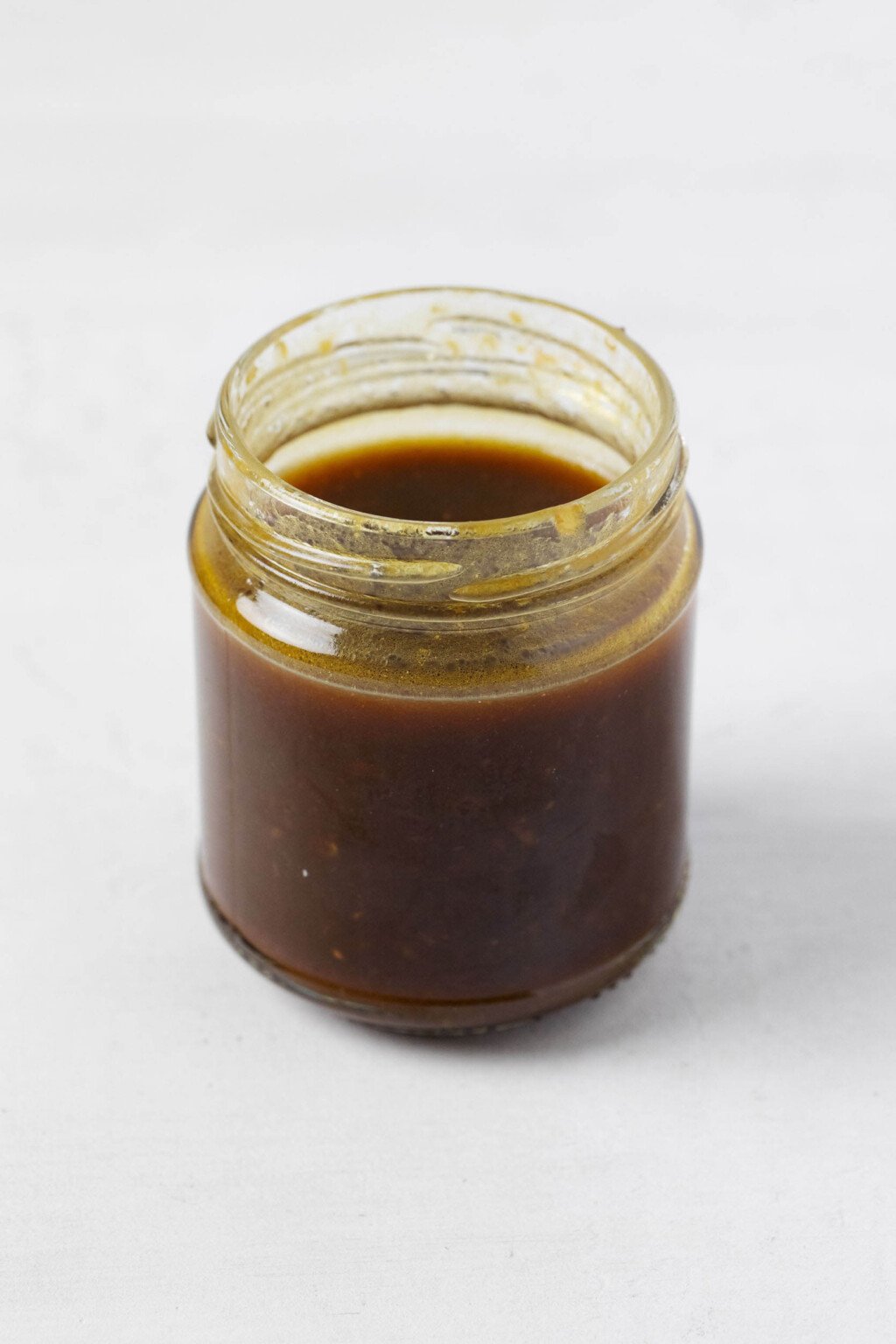
Together with my love of pizza, pasta, cacciatore, torta di mele, and Italian delicacies on the whole comes a severe penchant for balsamic vinegar.
I wish to drizzle aged balsamic vinegar onto many vegetable dishes, particularly steamed broccoli rabe and oven-roasted asparagus.
However when it comes time to decorate a salad, an excellent, flavor-forward balsamic French dressing is what I crave.
The recipe that I’m sharing collectively is my tried-and-true, a dressing that will get a lot use in my house.
You need to use the French dressing on a conventional tricolore salad or on any easy inexperienced salad that you simply love.
When you make it, you’ll uncover that it’s additionally a beautiful marinade for grilled greens or for topping Mediterranean-inspired grain bowls.
The various forms of balsamic vinegar
Historically, balsamic vinegar is comprised of grape should, which is complete, pressed grapes. The should accommodates loads of grape juice, but in addition the grape skins, seeds, and stems.
As a part of the standard balsamic-making course of, the grape should is decreased over warmth till it’s concentrated, then fermented, then aged in barrels.
It’s the same course of to winemaking, and, simply as in winemaking, the kind of wooden barrel will affect the vinegar’s style.
In case you store routinely for balsamic vinegar, then you will have discovered your self attempting to make sense of its labeling. Right here’s a rundown of the balsamic varieties that you simply may see on retailer cabinets.
Conventional balsamic vinegar (aceto balsamico tradizionale)
Conventional balsamic vinegar follows the method outlined above: urgent, lowering, fermenting, and growing older of grape should. There are strict requirements utilized to its manufacturing at every step of the way in which.
Conventional balsamic vinegar has protected geographic indication, or PGI. Which means its grapes need to be grown in one in every of two neighboring provinces within the Emilia Romagna area of Italy: Modena or Reggio Emilia.
Accordingly, conventional balsamic vinegar will carry the label of both Aceto Balsamico Tradizionale di Modena DOP or Aceto Balsamico Tradizionale di Reggio Emilia DOP. (DOP stands for “Denominazione di Origine Protetta.”)
Bottles of DOP vinegar are bought in glass bottles with distinctive shapes and have wax seals that point out their classic, or age. They’re prized condiments that may value as much as lots of of {dollars}!
Conventional balsamic vinegar is shiny and viscous, with a candy and sophisticated style. It’s meant for use for ending dishes—drizzling or dipping—and it might even be served as a palate cleanser.
I’ve solely had the pleasure of tasting such a vinegar as soon as. I cherished its richness and deeply candy, but not sugary candy, taste.
It was so completely different from even the “good” balsamic vinegars that I’d tried earlier than, and I may perceive why some folks say that it’s barely evocative of chocolate.
Condiment-grade balsamic (condimento balsamico)
There’s one other group of vinegars which can be made equally to conventional balsamic, but with extra liberal rules.
These are sometimes known as condimento balsamico, or condimento, indicating that they, too, are greatest suited to ending/drizzling.
Condimento is fermented and aged, however it may be aged for fewer than the minimal twelve years specified for conventional balsamic. I might be produced exterior of Modena or Reggio Emilia, although many types nonetheless hail from Emilia Romagna.
Condimento carries the label of IGP (“Indicazione Geografica Protetta”), moderately than DOP. It isn’t as costly as conventional balsamic, but it presents a equally syrupy texture and wealthy, complicated taste, because of some growing older.
Condiment grade vinegars are an excellent possibility for house cooks who need one thing high-quality for ending dishes, minus severe sticker shock.
Balsamic Vinegar of Modena IGP
The IGP label may also be used on bottles that should mimic conventional balsamic, whether or not they’re made in Italy or not.
These vinegars are labeled as “Balsamic Vinegar of Modena IGP.”
To be able to have that IGP label, the vinegars do must include conventional balsamic-making grapes, similar to trebbiano or lambrusco. They usually need to be aged for at the least two months in barrel.
Alternatively, fermentation isn’t mandated for a vinegar to hold the IGP designation, and there’s some leniency with elements.
A majority of these balsamic, particularly in the event that they’re produced exterior of Italy, may include a share of pink wine vinegar to contribute to acidity. They may additionally include thickeners or coloring to make them look darker and extra syrupy, like conventional balsamic.
There are various such balsamic vinegars bought within the US. Previous to penning this publish, I didn’t notice that many of the balsamic vinegar of Modena that I purchase suits into this class, moderately than one of many conventional classes.
The upside of an IGP vinegar is that the class encompasses a spread of costs, together with budget-friendly choices. In case you’re attempting to make sure that your vinegar is top of the range, an excellent rule of thumb is to seek out one which lists grape should as the primary ingredient, with minimal components.
Industrial balsamic vinegar
Industrial balsamic is a bulk-produced, vinegar-based product. It’s meant to seize the style of aged balsamic, but it surely’s not often aged in any respect.
Oftentimes, such a vinegar is solely pink wine vinegar, combined with colorings and sweeteners or flavorings to create a “balsamic-like” impact.
Total, industrial balsamic is way more acidic and tart than conventional balsamic. An excellent, commercial-grade bottle may include some portion of grape should, through which case it can style a bit mellower and extra balanced.
In case you have been to stroll right into a mainstream grocery retailer within the US proper now and decide up a cheap bottle of balsamic, it’s seemingly that you simply’d be buying a industrial grade possibility.
Within the US, some frequent industrial balsamic vinegars embody these from the Colavita and Pompeian manufacturers.
White balsamic vinegar
Along with having at the least two forms of reddish brown balsamic vinegar in my house at any given second—yet another viscuous and “fancy,” one commercial-grade—I additionally all the time have a bottle of white balsamic vinegar.
White balsamic is comprised of white grape should and white wine vinegar. Historically produced white balsamic is heated at low temperature and excessive stress, which preserves its pale colour, then aged in oak or chrome steel barrels.
As with brown balsamic, longer growing older leads to a extra complicated vinegar, and there are cheap variations made with using sweeteners or flavorings.
I love white balsamic. It’s gentle and candy, with none of the tough acidity that cheap, common balsamic can have.
I take advantage of white balsamic vinegar to make roasted eggplant each summer season and fall, and you should utilize it instead possibility for this balsamic French dressing, too.
So…which sort of vinegar is greatest for balsamic French dressing?
Having now supplied you a dissertation on the intricacies of balsamic vinegar, I’ve a easy piece of fine information.
Cheap and non-traditional balsamic vinegar, together with industrial grade balsamic, is definitely good for balsamic French dressing.
In truth, the complexity of conventional balsamic vinegar, in the event you’re fortunate to have it at house, might be misplaced when it’s whisked right into a bottle of salad dressing.
Condimento balsamico or one other balsamic with the IGP designation may work on this French dressing, however it could truly create a French dressing that’s overly syrupy or thick. You’ve gotten the choice to make use of a type of varieties, however you don’t need to.
An affordable balsamic vinegar will create a stunning, candy tart French dressing that captures the spirit of balsamic vinegar whereas being inexpensive.
The thinner texture of business, or imitation, balsamic is well-suited to whisking and emulsification, too.
TL;DR, when you’ve got a flowery bottle of conventional balsamic vinegar at house, reserve it and savor it slowly. If in case you have condiment-grade balsamic, that’s in all probability price saving, too.
A Balsamic Vinegar of Modena IGP with out a lot age, a industrial balsamic, and white balsamic (any form) will all work superbly in my go-to French dressing.
Different balsamic French dressing elements
Most of my vinaigrettes observe the same components: a 2:1 ratio (or thereabouts) of oil to vinegar (or one other acid), salt, pepper, and aromatics.
For this balsamic French dressing, I hold the ratio at simply lower than 2:1, which is nitpicky, however I feel it leads to an ideal degree of acidity.
The fragrant part for this recipe is minced garlic, although minced shallot and even pink onion can also be high quality in a pinch. In case you don’t have any alliums at house, you should utilize garlic powder (1 / 4 teaspoon), too.
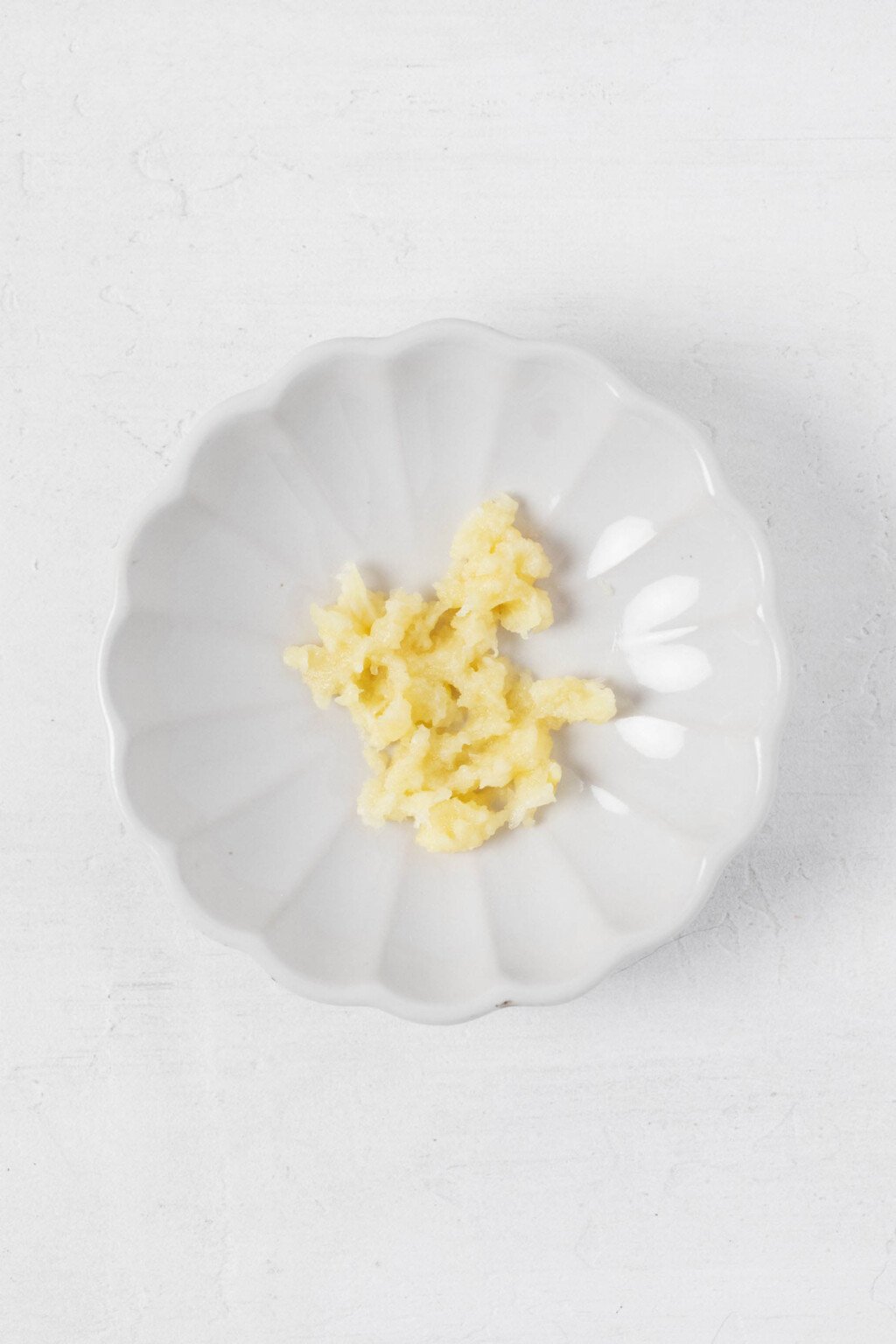

With few exceptions, I additionally like so as to add a small quantity of sweetener to my vinaigrettes, so as to create steadiness and offset the acid a bit.
A small quantity of maple syrup finds its manner into my beloved pink wine French dressing and easy champagne French dressing, for instance.
Balsamic vinegar is inherently sweeter than wine vinegar, however I nonetheless assume that including a little bit of maple syrup to this dressing is essential.
Lastly, I like including some Dijon mustard to the French dressing. It lends complexity and zesty notes, elevating the dressing past a easy oil + vinegar combo.
All in all, the elements that you simply’ll must make my balsamic French dressing are:
- Balsamic vinegar
- Olive oil
- Salt
- Pepper
- Maple syrup
- Dijon mustard
- Minced contemporary garlic
Making ready balsamic French dressing
My go-to balsamic dressing comes collectively simply with whisking or shaking.
You may add all the things to a liquid measuring cup, then use a small whisk to emulsify the elements. After that switch them to a jar or hermetic storage container for storage.


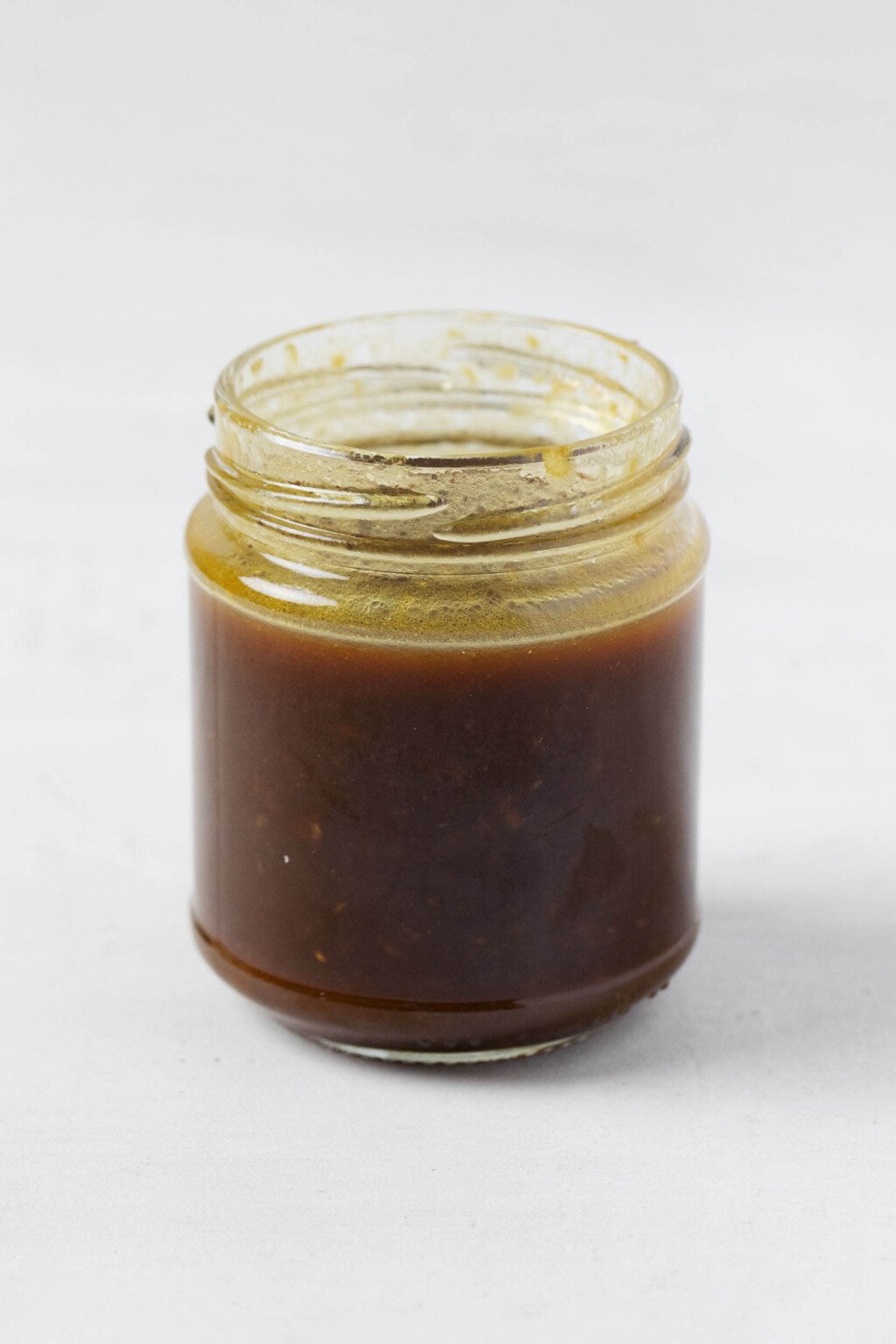

Alternatively, you possibly can add all the elements to the mason jar that you simply are inclined to retailer the dressing in. Cowl it and shake it vigorously, till it’s uniform in consistency.
I feel most vinaigrettes, together with this one, style higher after their flavors have had a bit time to sit down and mingle. So I like to recommend whisking the balsamic French dressing collectively just a few hours earlier than you intend to make use of it, at the least.
As soon as ready, the balsamic French dressing might be saved in an hermetic container within the fridge for as much as per week.
Serving options
This dressing is a favourite of mine for arugula, child kale, and mizuna. It’s candy notes work effectively for barely bitter or peppery greens.
The French dressing may also be a fantastic possibility for bowls. One in all my favorites is a straightforward mixture of:
…with the dressing spooned generously over all the things.
You need to use the French dressing to complete my balsamic roasted vegetable pasta or farro salad with balsamic roasted cauliflower and roasted chickpeas.
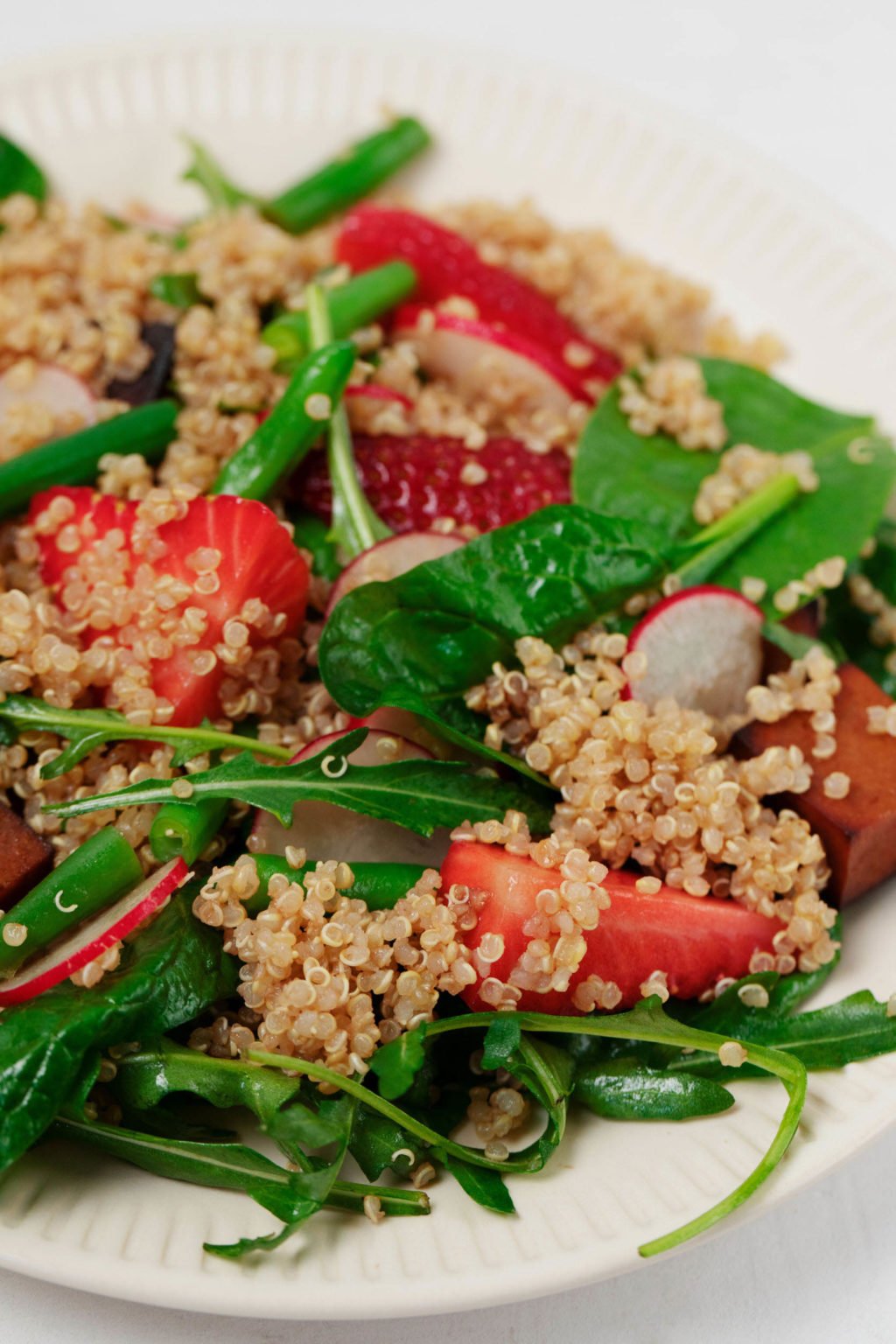

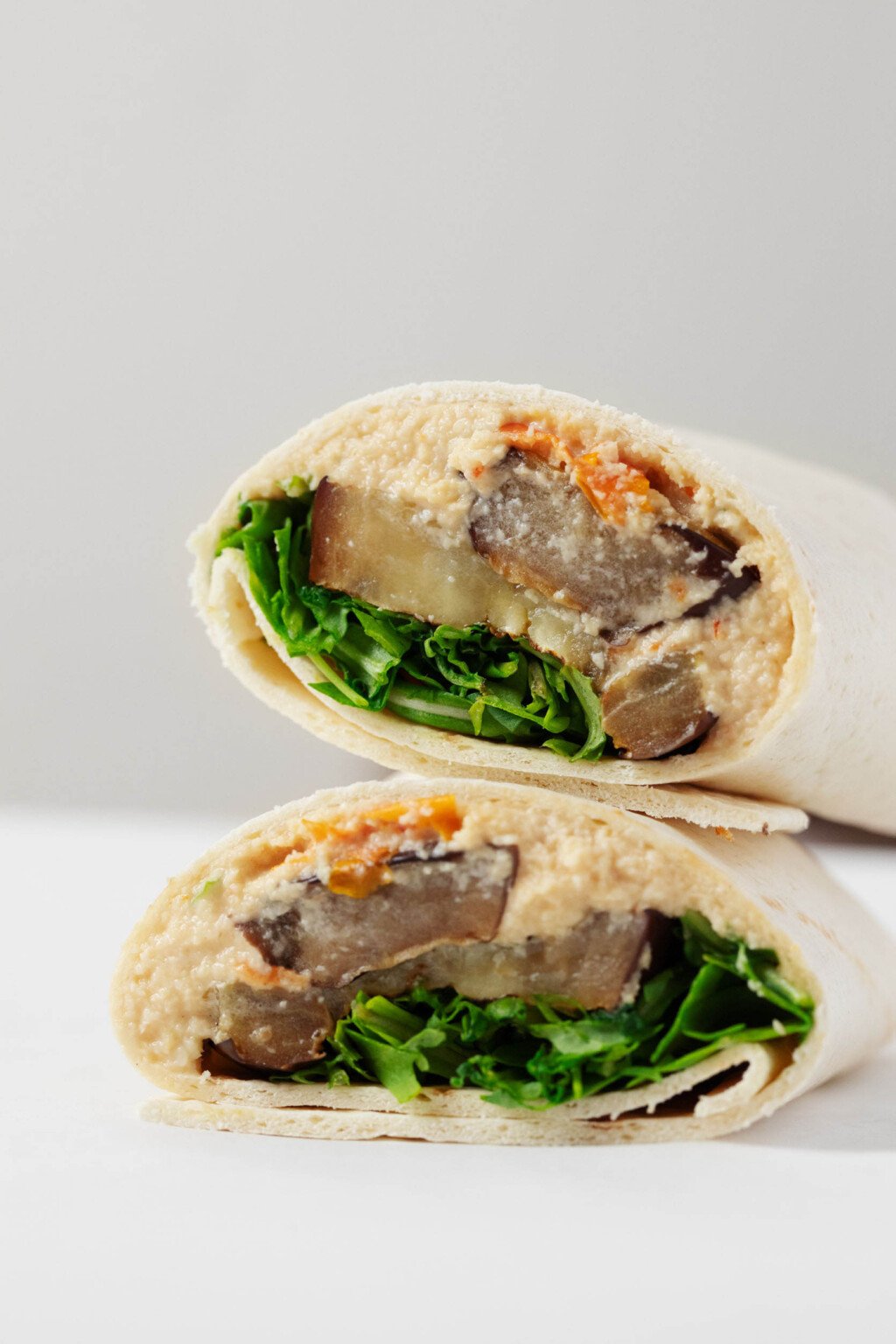



It’s one of the best and solely dressing for my pretty, springtime balsamic tofu quinoa strawberry salad.
And if none of these concepts encourage, the French dressing is a extremely good addition to the filling of my eggplant arugula wraps with tomato basil cashew cheese.
Briefly, I don’t assume you’ll have any hassle discovering makes use of for this versatile French dressing. I routinely make a double batch, and it will get completed in a short time!
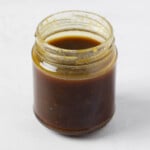
Yields: 8 servings
- 7 1/2 tablespoons olive oil (115ml)
- 4 tablespoons balsamic vinegar* (60ml)
- 2 teaspoons Dijon mustard
- 1 teaspoon maple syrup (substitute agave syrup)
- 1/2 teaspoon salt
- 1/8 teaspoon freshly floor black pepper
- 1-2 cloves garlic, finely minced (alter the quantity to style)
-
Whisk all elements collectively in a liquid measuring cup till emulsified, then switch them to a mason jar for storage. Alternatively, you possibly can add all the elements to your mixing jar, then shake vigorously until emulsified.
-
Retailer the balsamic French dressing in an hermetic container within the fridge for as much as one week.
*I like to recommend Balsamic Vinegar of Modena IGP, commercial-grade balsamic vinegar, or white balsamic vinegar for this recipe. See publish physique for extra particulars on balsamic vinegar varieties!
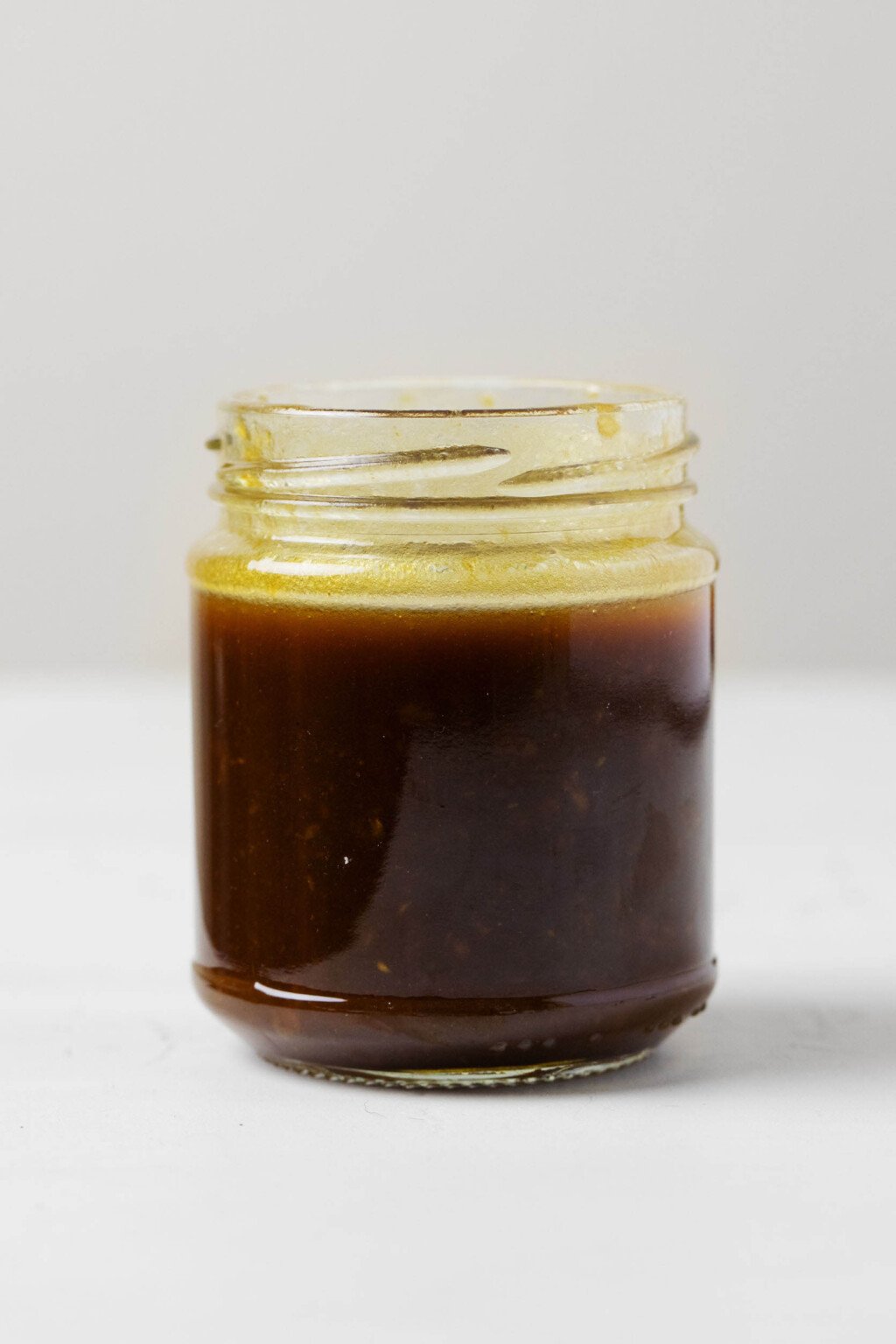

After I sat right down to publish about this straightforward dressing recipe, I had no intention of getting so deep into the intricacies of balsamic vinegar. In case you’ve bothered to learn this far, thanks for bearing with me!
That mentioned, it was actually enjoyable to be taught extra about an ingredient that I like and use usually, beforehand with none actual information of its historical past or nuances.
In any case, I hope that you simply’ll end up reaching for a jar of this nice French dressing as steadily as I do.
Take pleasure in!
xo









Discussion about this post